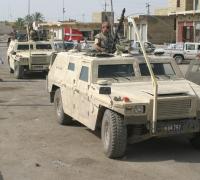We need to rethink ‘disarmament, demobilization and reintegration’
Since the early 1990s programs for disarmament, demobilization and reintegration (DDR) have been at the heart of international peacebuilding practice. However, as Jairo Munive and Finn Stepputat argue in a new article, the proliferation of armed non-statutory actors has changed the strategic context, which has spurred discussions of a ‘second generation’ of DDR. The article introduces a special collection of the open access journal Stability, Rethinking DDR and Violence Reduction Interventions, edited by the authors.
The special collection contributes to discussions about new templates for post-conflict violence reduction, looking across experience from armed conflicts and urban violence: Helene Kyed and Michael Gravers provide insight into the current peace process in Myanmar that involves ethnic militias, arguing that in this context, a sort of ‘reintegration’ of militias would have to take place before disarmament and demobilization; Nikkie Wiegink discusses the assumption that DDR programs should cut the lines of command and control, taking a group of former RENAMO combatants as an example; Brian McQuinn puts forth a framework of analysis of rebel organizations that has implications for how different armed groups can be approached for DDR; and finally, Dennis Rodgers and Steffen Jensen elaborate on what DDR policy makers can learn (and should not learn) from programs that aim to reduce gang-related violence. Sometimes it is better not to act, they argue.
The articles for this special collection were produced for a DIIS workshop, which was through the Defence and Security Studies that DIIS carries out for the Danish Ministry of Defence.DIIS Experts


